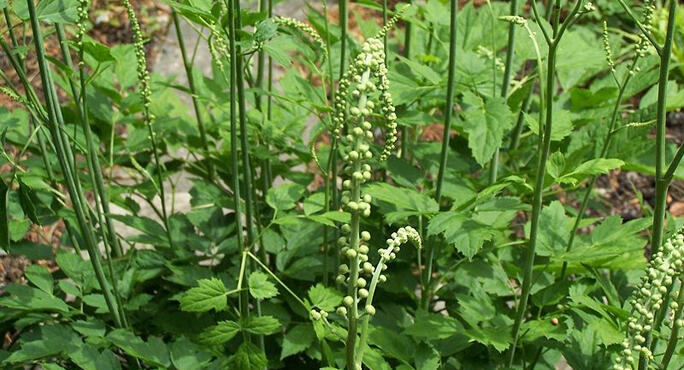Common Name
Botanical Name
AKA
Also known as black snakeroot or rheumatism weed, Black cohosh is a plant native to North America. Black cohosh is a perennial herb up to 3 meters in height, with a gnarled rhizome. The plant grows wild in shady woods and is distributed from Maine to Ontario, and from Wisconsin to Georgia and Missouri. Native Americans used the rhizome of black cohosh to promote healthy menstruation, relieve rheumatic pain, to treat general malaise, and to relieve coughs, colds, fatigue and constipation. Black cohosh enjoyed traditional use among women for menstrual irregularities and to promote milk flow. Due to its effectiveness black cohosh was adopted by early settlers and herbalists. In the 1840s black cohosh became favored by the Eclectic physicians, who used it for many symptoms, especially to treat rheumatism and rheumatic pain. The species name cohosh derives from the Algonquin Indian language, and means “rough,” in reference to the plant’s gnarled root.
Currently, black cohosh has become the largest-selling herbal dietary supplement in the United States for relieving uncomfortable symptoms associated with menopause. Black cohosh influences the endocrine regulatory systems, with effects similar to one of the milder endogenous estrogens, estriol. For a short duration, compounds in the herb bind with estrogen receptors, and are thought to exert effects on the vaginal lining.
Compounds
Phytochemical compounds in black cohosh include triterpene glycosides, actein (hypotensive, vasodilator), cimigoside, formononetin, oleic, palmitic, and salicylic acids; cimigonite; tannin; and volatile oil. The naturally occuring compounds in black cohosh possess a very broad range of activities, including estrogenic, anticancer, hypotensive, peripheral vasodilatory, analgesic, antiinflammatory, antioxidant, antianxiety, and antispasmodic activities.
Modern clinical studies have investigated the therapeutic efficacy and safety of black cohosh extracts for indications of the neurovegetative symptoms caused by menopause. These studies have used internationally recognized and validated scales as controls for the quantitative determination of menopausal symptoms, self-evaluation of depression and anxiety. Physical symptoms were determined using vaginal smears, and measures of gonadotropin secretion.
Germany’s Commission E reports that black cohosh possesses estrogen-like action, suppresses luteinizing hormone, and binds to estrogen receptors.


